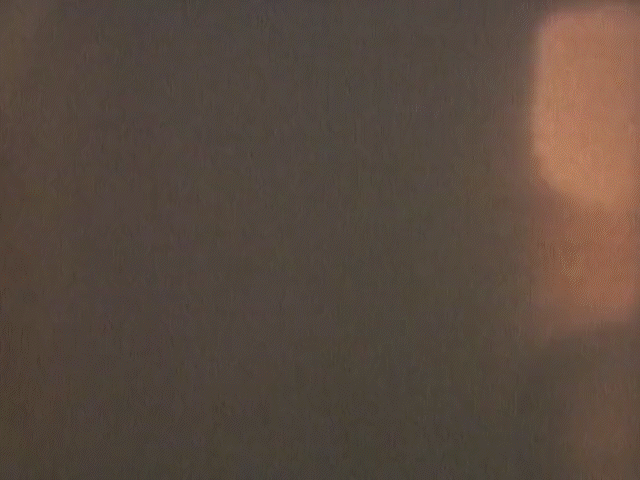David Grubbs
Banana Cabbage, Potato Lettuce, Onion Orange
1996
Table of the Elements
[Zinc] TOE-CD-30
Compact disc
"...In which a solo record = record of solos and less is not MOR. David Grubbs is best known for his work with Gastr del Sol, The Red Krayola, Squirrel Bait, and for having co-directed, with Jim O'Rourke, the Dexter's Cigar record label."
"A triptych of elegant instrumentals. What at first appears tightly measured and calculatedly simple reveals ambiguity and complexity. Components of a sequence change function. Feldmanesque undertow occurs as a familiar gives way to alien; new patterns shed light on recent memory."
John Corbett
Gastr del Sol
The Harp Factory on Lake Street
1995
Table of the Elements
[Potassium] TOE-CD-19
Compact disc, laser-etching, poster, obi
Is 90s nostalgia underway yet? If not, this reissue may be just the thing to get it started.
In 1994, Chicago is the fountainhead for a bona-fide Scene, in which bands are giving timbre and texture priority over riffs and power chords. To the chagrin of many, the press will label it all “post-rock.” It's the definitive movement of the decade, and front and center are Gastr del Sol, comprised of David Grubbs (previously: Squirrel Bait, Bastro) and Jim O'Rourke (subsequently: Wilco, Sonic Youth). Some of their city-mates may shift more units; Gastr, with a relentless drive for reinvention, shift the boundaries of where a band can go. Avant punk, atonal song-styling, musique concrète, delicate piano-guitar interplay, raw electronics and modernist chamber music—all are fair terrain, traversed with subtlety and finesse. Behind the obligatory horn-rims, Grubbs and O'Rourke have vision.
A dozen years later, this overdue reissue of 1994's The Harp Factory on Lake Street EP provides the missing piece in Gastr's otherwise available discography. To hear it again is a treat. It's their notorious “big band” record, and the ten-piece ensemble is a veritable All-Star team of mid-90s Chicagoans, including members of Tortoise, Sea and Cake, Shellac, Dazzling Killmen, Brise Glace and the Vandermark 5; through studio maneuvering courtesy O'Rourke and engineer John McEntire, they blossom into a small-sized orchestra. Remarkably confident in the use of space and dissonance, Harp Factory also emphasizes the conceptual 'scrape', the friction between nuance and noise, that plays such a prominent role in Gastr's subsequent Upgrade and Afterlife LP. Familiar signposts are still in sight—O'Rourke's compositional skills, Grubbs' associative, absurdist musings—but this is definitely their boldest outing. It's a record full of blissful confoundment, one that aptly vivifies the spirit of an era.
Gastr del Sol may have lasted a brief five years, but they are to the 1990s what the Magic Band, This Heat and Sonic Youth were to their respective decades: intrepid trailblazers through the backwoods of sound.
“Hyperactives David Grubbs and Jim O'Rourke break further out with an entertaining coup d'etat on the rock group format. Uproarious orchestral massifs level out into a Nick Drake-style interlude of lyricism knocked cleverly and chromatically askew from its harmonic center; the baroque and introspective middle section for guitar and piano hangs together as beautifully as a well-crafted mobile. This is ample testament to the growing critical belief that in O’Rourke’s case, you can never have too much of a good thing."
The Wire
“Gastr del Sol's musical universe is filled with juxtapositions; for years Grubbs and O'Rourke have constantly futzed with the musical boundaries of the hybrid genre of 'innovation,' one they seem to spontaneously reinvent."
Artforum
“Never the same thing twice, Gastr del Sol radiates new sounds steadily as a breaking dawn."
Tower Pulse
Tony Conrad Collection no. 06)
TONY CONRAD/GASTR DEL SOL
TEN YEARS ALIVE ON THE INFINITE PLAIN
GASTR DEL SOL
THE JAPANESE ROOM AT LA PAGODE
TONY CONRAD
MAY
1995
Table of the Elements
[Copper] TOE-SS-29a
2x 7”singles, 21.75”x29” poster
Tony Conrad Collection no. 07)
GASTR DEL SOL
THE JAPANESE ROOM AT LA PAGODE
TONY CONRAD
MAY
1995
Table of the Elements
[Copper] TOE-SS-29b
7”single, 21.75”x29” poster
Photograph: Bradly Brown
Design: Jeff Hunt
Table of the Elements, 1995
“I went to the Japanese room at La Pagode to see an autobiographical film by a French director. It opened with footage of Cairo during the Gulf War. The director was represented by a milddle-aged Egyptian writer: same glasses. I was still weighing the merits of the Arabic voiceover when, unexpectedly, the film about Cairo ended and a film about the French Director began in earnest.”
“Why May Day? In honor of Maia, Roman ‘good goddess’ of fertility and women’s chastity, worshipped only by women. Love is not a suitable topic for music made by those whose history stinks of their habitual suppression of women. Why May Day? An international workers’ day in celebration of women and men together not as lovers but at labor. The high and low voices in polyphony signify women’s and men’s equity in a society unsoiled by the stain of love. Why ‘May Day!’ as men in distress face death? Love in music is only to yoke woman in opposition to man.“
“I had a dream that I shared a space with every living thing. Huge and waiting in the even light there stood a wall covered with windows and doors variously labeled with animal spoors and marked with names. As soon as I focused it clearly, each ancient door mysteriously became open, and a sound current flowed out all over the infinite plain. Other doors opened from time to time, reverberating the sound everywhere, but differently. And then suddenly there was nothing alive – but nothing had changed, and when I had returned, the sound was still there.”
Available in limited quantities, this split Gastr del Sol/Tony Conrad record was originally released in 1995. The Gastr side features one of their earliest efforts at intensive multi-track recording; instrumental passages segue through the faint murmur of a thousand voices. Conrad’s contribution is excerpted from an unreleased version of Early Minimalism: May 1965, recorded at Steve Albini’s studio with Jim O'Rourke and Bob Weston (Shellac). The packaging is, arguably, the most lavish of any Table of the Elements release: the sleeve unfurls into a 21” x 29" poster, displaying texts by the artists in metallic plum and copper inks.
The first 500 copies contained a second record, featuring an excerpt from an unreleased recording of Tony Conrad’s Ten Years Alive on the Infinite Plain (1971): Tony Conrad, violins; Jim O'Rourke, Long String Device; David Grubbs, bass. Recorded at Jim’s Steam Room studio, 1995.
Photograph: Bradly Brown
Design: Jeff Hunt
Table of the Elements, 1995
“Gastr del Sol’s musical universe is filled with juxtapositions; for years Grubbs and O'Rourke have constantly futzed with the musical boundaries of the hybrid genre of “innovation,” one they seem to spontaneously reinvent. “
Artforum
TONY CONRAD (USA)
JOHN FAHEY (USA)
GASTR DEL SOL (USA)
BRUCE GILBERT (UK)
BERHNARD GÜNTER (GERMANY)
KEIJI HAINO + FUSHITSUSHA (JAPAN)
THURSTON MOORE AND FRIENDS (USA)
LOREN MAZZACANE CONNORS (USA)
JIM O’ROURKE (USA)
SPECIAL GUESTS
YTTRIUM
TABLE OF THE ELEMENTS FESTIVAL NO. 2
Table of the Elements
November 7, 8 and 9
1996
[Yttrium] TOE-29
The Empty Bottle
1035 N. Western Avenue
Chicago, IL
Three-day festival pass: $25.00
Producers: Jeff Hunt and Kris Johnson
Pauline Oliveros
(with Tony Conrad, David Grubbs)
Primordial/Lift
2000
Table of the Elements
[Iodine] TOE-CD-53
Compact disc
Minimalist composer and founding member of the Deep Listening Band, Pauline Oliveros is known for creating pulsating soundscapes and sonic meditations. In these premier recordings, however, she engages a more aggressive, electric sound with assistance from fellow minimalists Tony Conrad and Alex Gelencser, and Gastr del Sol's David Grubbs. Within a strategic modulation processed through a low-frequency oscillator, Conrad's violin, Grubbs' harmonium, and Oliveros' signature accordion drone and enthrall.

